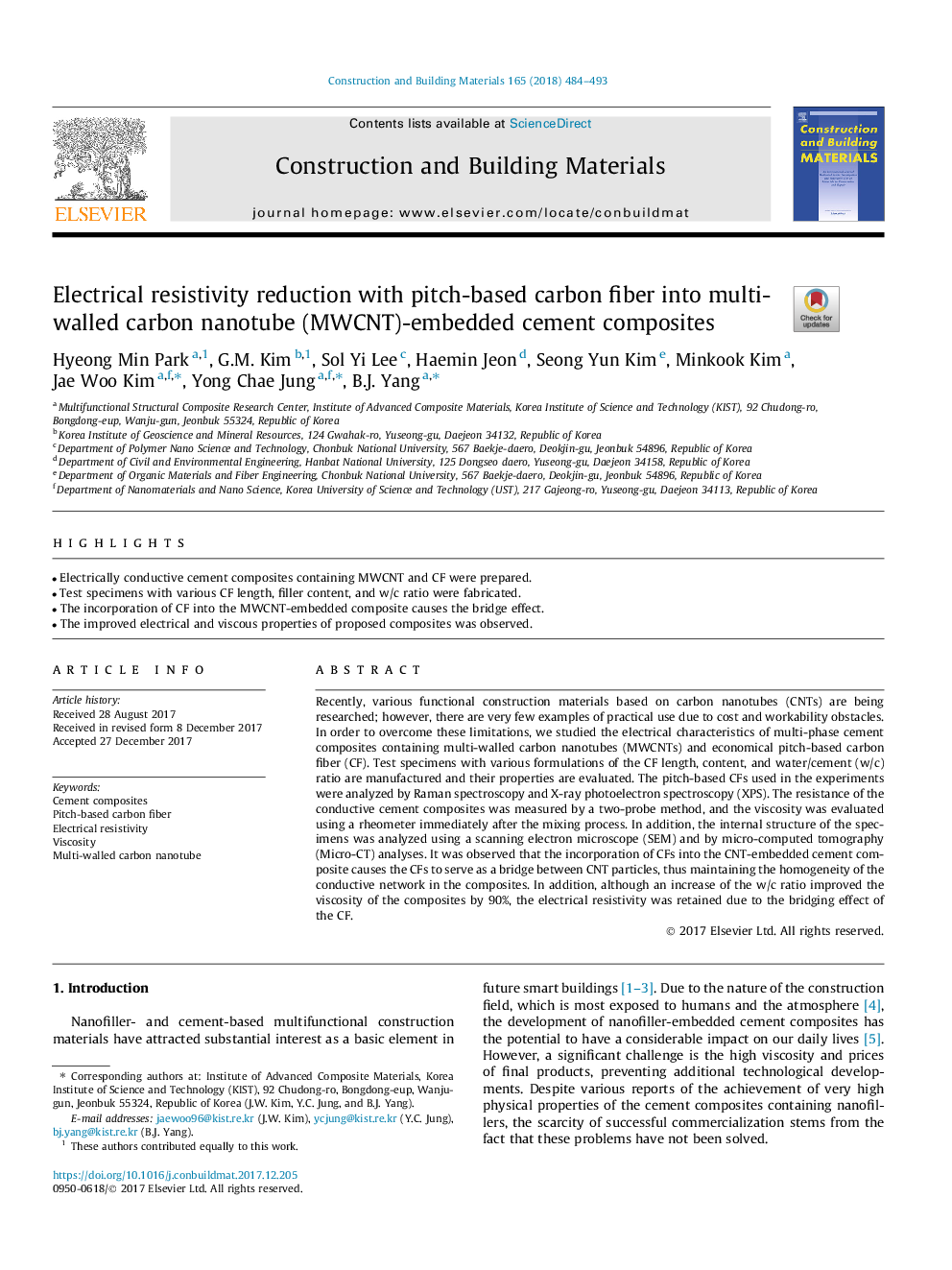| Article ID | Journal | Published Year | Pages | File Type |
|---|---|---|---|---|
| 6715652 | Construction and Building Materials | 2018 | 10 Pages |
Abstract
Recently, various functional construction materials based on carbon nanotubes (CNTs) are being researched; however, there are very few examples of practical use due to cost and workability obstacles. In order to overcome these limitations, we studied the electrical characteristics of multi-phase cement composites containing multi-walled carbon nanotubes (MWCNTs) and economical pitch-based carbon fiber (CF). Test specimens with various formulations of the CF length, content, and water/cement (w/c) ratio are manufactured and their properties are evaluated. The pitch-based CFs used in the experiments were analyzed by Raman spectroscopy and X-ray photoelectron spectroscopy (XPS). The resistance of the conductive cement composites was measured by a two-probe method, and the viscosity was evaluated using a rheometer immediately after the mixing process. In addition, the internal structure of the specimens was analyzed using a scanning electron microscope (SEM) and by micro-computed tomography (Micro-CT) analyses. It was observed that the incorporation of CFs into the CNT-embedded cement composite causes the CFs to serve as a bridge between CNT particles, thus maintaining the homogeneity of the conductive network in the composites. In addition, although an increase of the w/c ratio improved the viscosity of the composites by 90%, the electrical resistivity was retained due to the bridging effect of the CF.
Keywords
Related Topics
Physical Sciences and Engineering
Engineering
Civil and Structural Engineering
Authors
Hyeong Min Park, G.M. Kim, Sol Yi Lee, Haemin Jeon, Seong Yun Kim, Minkook Kim, Jae Woo Kim, Yong Chae Jung, B.J. Yang,
